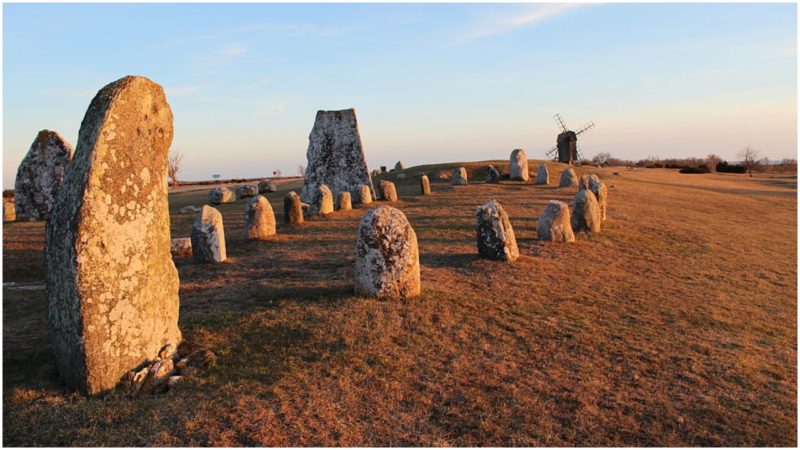There are a lot of burial sites that have been discovered that are directly associated with Vikings. One of them is Gettlinge Gravfalt, an impressive Viking Stone ship burial ground and one of the largest and certainly most beautiful prehistoric burial sites on the island of Öland, Sweden.

These stone ship graves were an early burial custom, characteristically Scandinavian, but also found in Northern Germany and the Baltic states. The grave or cremation burial was surrounded by tightly or loosely fit slabs or stones in the outline of a ship.
The Oland’s grave field extends approximately two kilometers, making it one of the largest grave fields on Ölandwith. The size of the ships varies from few meters to 80-100 meters or more and perhaps depended on the social status of the deceased.

The most worth seeing the part with the largest number of different stone settings is located between Klinta and Gettlinge which is situated on the western fringe of the Stora Alvaret.
It was designed by UNESCO as a World Heritage Site due to its extraordinary biodiversity and prehistory. The fields include burial sites and standing stones from the Stone Age to the late Iron Age.


At Gettlinge, as for much of the island of Oland, bedrock layers are primarily Ordovician limestone that dates to at least 600 million years ago.
It was the end of the last ice age which led to uplift, creating the landform that is now the island of Oland.
The largest granite ship at Gettlinge is 30 meters long and consists of 23 granite blocks. In addition, there are more than 200 stone circles, though in the past there were much more and several of these have vanished due to quarrying of the stones. 15 of the over 200 remaining graves have been examined archaeologically.
The studies have noted a use of the grave field over a period of about 2,000 years – from about 1000 BC. to 1050 AD.

Viking graves have also been found at the Hulterstad Gravefield as well as the extensive Strandvalle Gravfeld, both on Oland. These findings imply that Gettlinge was a link within a chain of Viking settlements concentrated on the southern coasts of Öland, although most Viking settlements were actually found on the southeast of Öland having better access to the open sea.
